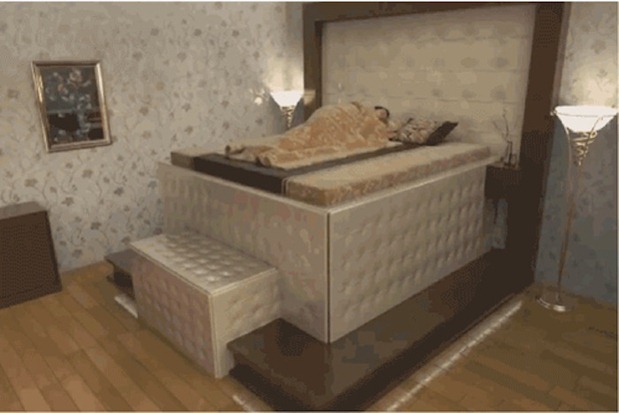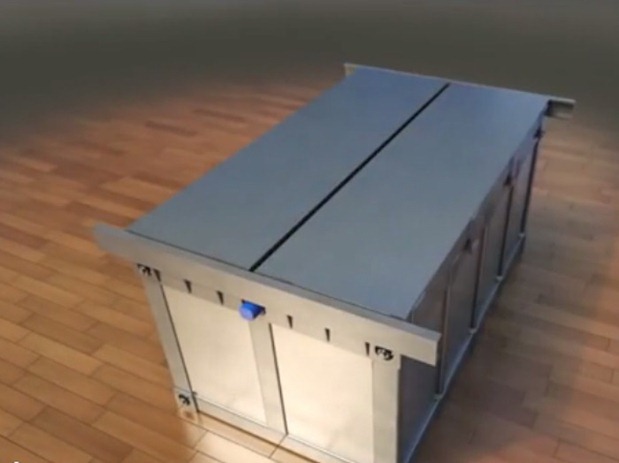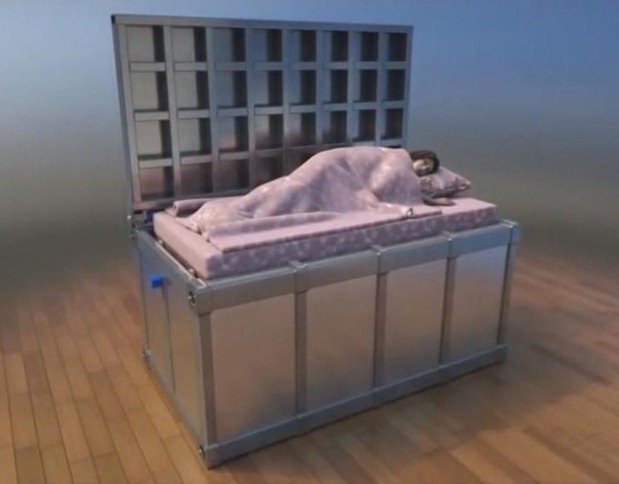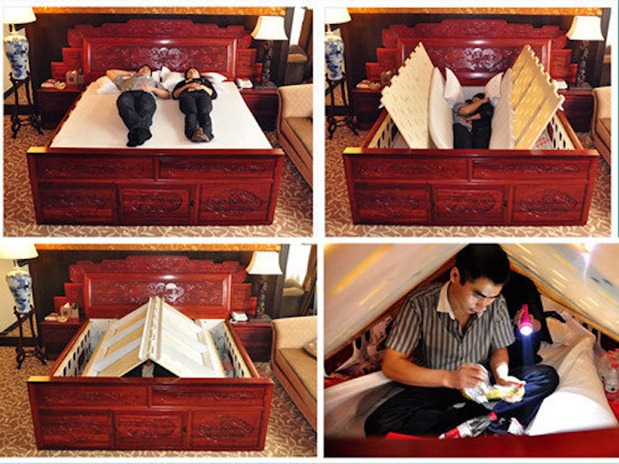
Residents of Vancouver and Victoria received a scary middle-of-the-night wakeup call on December 30 when a 4.8-magnitude earthquake shook the B.C. coast in the wee hours of the morning, causing houses to shake in their foundations as they weathered what one seismologist described as the largest quake the region experienced in years.
If the fear of surviving “the big one” is keeping you awake, then Chinese inventor Wang Wenxi has got you covered with his patented earthquake-proof bed.
Equipped with a special sensor, when the bed detects seismic shaking its mechanism springs into action, causing the base of the bed to open up in the centre and send you plummeting down into a steel-reinforced chamber as the two metal pieces slam shut, sealing the sleeper safely encase inside a small encased space – sort of like a tiny panic room.
Wenxi has been refining the design he first patented back in 2010, following the catastrophic Wenchuan and Yushu earthquakes that rocked Chin in 2008 and 2010, respectively.
“The Wenchuan and Yushu earthquakes caused heavily casualties,” Wenxi told reporters of how he came up with the idea for his design. “So I thought the most serious thing I could do was to invent something to reduce the toll in lives.”
The designer’s latest version is built even stronger to provide even more protection, and also includes enough supplies (food, water, etc.) to sustain a survivor who becomes trapped inside for an extended period of time.
Wenxi is also working on an alternative “gull-wing” design, with two halves of a box-like steel enclosure atop the bed like a canopy, which slam shut at the first hint of any shaking and quaking.
Here’s another take on the “gull-wing” design, with curved wings poised above the bed poised to snap shut and encase the sleeper in a coffin-like tube.
Wenxi offers up another variation on an earthquake-proof bed, with this model featuring a slab-like metal “roof” that uses hydraulics to slam down and seal the sleeper into a secure tomb-like enclosure.
Similarly, Wenxi has an alternative design in which the shelter’s top, when not in use, is set up against a wall. When seismic activity is detected, the metal slab snaps shut like a mousetrap, much like somebody slamming a book closed.
His latest version is stronger to provide even more protection, and also includes enough supplies (food, water, etc.) to sustain a survivor who becomes trapped inside for an extended period of time.This design appears to be a less-sturdy, less-expensive (but less space-consuming) take on Wenxi’s design, with the bed platform folding inward and dumping the unsuspecting sleeper inside the bed’s hollow core, then flipping around to create into a protective tent-like top that will presumably keep one safe from falling debris.
HGTV your inbox.
By clicking "SIGN UP” you agree to receive emails from HGTV and accept Corus' Terms of Use and Corus' Privacy Policy.














